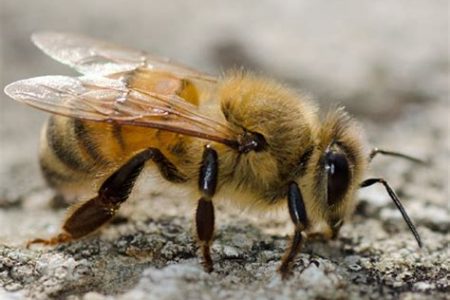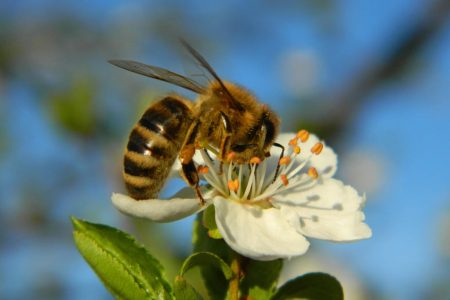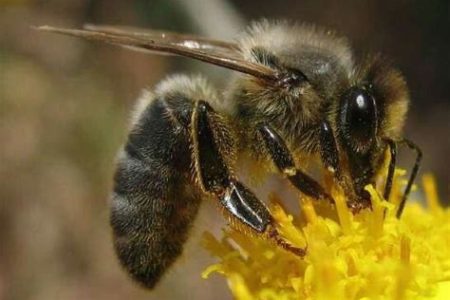The Caucasian Honey Bee.
(Apis Mellifera Caucasica)
Characteristics of the Caucasian Honey Bee.
The Caucasian bee closely resembles the Carniolan bee in general appearance, and may not be easily distinguished from the latter except by morphometric examination (longer proboscis (long and pointy tongue), cubital index (the pattern of the veins of the fore wings)about 2 on average).
It’s indigenous to the mountain range and southern valleys of the Caucasus (hence the name), and to the eastern end of the Black Sea coast in Anatolia. The climate varies from humid subtropical on the coast to cool temperate in the mountains, and local strains reflect the different climates, the bees from the mountains being larger and darker, with longer overhair, than those from the lowland region.
The Caucasian bee is noteworthy for the length of its proboscis, being the longest of all the mellifera honey bees. You may expect that this would give it an advantage over shorter-tongued races from a foraging perspective but this is not play a major factor in success or otherwise of the colony.
Brood rearing generally starts late and the spring build-up is slow, leading to a medium population size in summer and autumn. Swarming tendency appears to be at the low end, with the number of swarm cells moderate. Caucasian bees appear to be at their best in protracted slight nectar flows; they seem to be unable to cope with short heavy flows, most of which is stored in the brood chamber rather than the supers. Honey cells are known as “wet” capped, this means that there is no air space between the honey and the capping, experience in the field shows that this may lead to “weeping” of the comb.
Caucasian bees are notorious for their heavy use of propolis, especially at the hive entrance. In Winter the entrance may be almost completely closed by a curtain of resin, leaving only a few small holes for ventilation and flight activity. Caucasian bees have poor resistance to nosema disease and this may lead to heavy winter losses.
The Caucasian bee is well known for having a “high level of gentleness”, it certainly it had this reputation in the 1930’s, although there was little experience of this bee in Britain at that time. It has a reputation of being able to combine well with other races, particularly the Carniolan and Italian bees. Historically, there have been reports of extremely aggressive behaviour by “Caucasian” bees in this country, but it is thought that this may have due to being hybridised with local bees. They have a reputation for having poor wintering qualities.

The Italian Honey Bee
(Apis Mellifera Ligustica)
The British Bee has fewer swarms and replaces the queen approximately every 3 years. It has many important qualities that have evolved in the strain over thousands of years, making it entirely suited to our climate, over other imported sub-species and have been found to be easy to handle and docile.

The Carniolan Honey Bee
(Apis Mellifera Carnica)
The Carniolan honey bee of Slovenia and Austria is the nearest relative of the Italian, but it is larger and darker, the characteristic yellow rings of the Italian Bee being replaced by dark bands. The carnica territory covers a large area of south-eastern Europe, and there are numerous regional variations.

The British Honey Bee
(Apis Mellifera Mellifera)
The Carniolan honey bee of Slovenia and Austria is the nearest relative of the Italian, but it is larger and darker, the characteristic yellow rings of the Italian Bee being replaced by dark bands. The carnica territory covers a large area of south-eastern Europe, and there are numerous regional variations.

